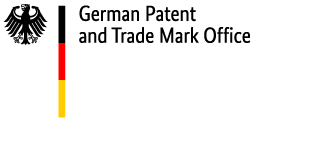Content
United by music - protected by trade marks

Congratulations to our Austrian neighbours, to Switzerland for the inventive show and to all participants!
Eurovision Song Contest and IP rights
The Eurovision Song Contest (ESC) is much more than a TV event - for millions of fans it is an iconic symbol for a Europe united by music. Behind the scenes, an elaborate system of trade mark rights and copyrights serves to protect this unique contest.
The EBU: keeper of the ESC
The European Broadcasting Union (EBU) was founded in 1950 to enable the international exchange of TV programmes. The EBU's main task consists of organising and coordinating the exchange of programmes and the promotion of technological developments in radio and television. In 1953, the EBU broadcast the coronation of Queen Elizabeth II. It was its first international live TV transmission ever. In 1956, the first Eurovision Song Contest was televised.
The EBU is a protected word mark (EM 011436326) and also has its own technological developments - for example, it filed a patent for a satellite conferencing system (DE000069605620T2) in 1996.
Trade mark rights at the ESC: from "Waterloo" to "Ein bisschen Frieden"

EM 013373121
The ESC itself is, among other things, a protected word/figurative mark (EM 013373121) and many artists also have their names protected as a trade mark, among them ABBA (see for example IR1494598), the iconic band that made ESC history with its song "Waterloo" in 1974. The singer Udo Jürgens, who won the ESC with "Merci Cherie" in Luxemburg in 1966 and thereupon started an international career, lives on in the trade mark register (for example IR 1692229) as well. And there are many more - just take a look into our DPMAregister (trade marks)!
Just one more tidbit of information: "'N bisschen Frieden" (the title of Nicole's winning song of 1982, which is more relevant than ever) can also be found in the register under DE 302019015044, even though in the form of a musical's name. The song was composed by Ralph Siegel, one of the most influential German characters of the ESC. And of course, Lena Meyer-Landrut can be found in the register, too. In 2010, Lena and the German entertainer Stefan Raab jointly managed to bring the ESC back to Germany for the second, but so far also the last time. In the meantime, the trade marks "Lena" (DE 302010042635) and "Lena Meyer-Landrut" (DE 302010043108) have been deleted though.
Musical recognition: the "Te Deum" as a sound mark

EM 000907527
The prelude of Marc-Antoine Charpentier's "Te Deum" has been the opening hymn of the ESC for more than 60 years. Out of the six original settings of the works, only four have remained. The famous "Prelude (Marche en rondeau)" was registered as a sound mark (EM 000907527) in 1998.
Focus on copyrights
In addition to trade mark rights, copyrights also play an important role for the ESC. They protect the creative accomplishments of the composers, lyricists and artists and form the basis for the international collaboration and diversity which make the ESC so special.
Three questions concerning "music and copyright"
You would like to host your own song contest, adapt "Merci Cherie" or simply attend an ESC party wearing a fancy glitter costume, singing covers of "Waterloo", "Ein bisschen Frieden" and "Satellite"? Then you will find the answers to all your questions here.
-
Can I simply cover a piece of music, and what do I have to bear in mind?
Pieces of music are works protected by copyright - therefore, if you want to perform (cover) someone else's piece of music in public, for example at a local fair or a concert, you will usually need the appropriate licenses. A license is the right to use a copyrighted work in a certain way, for example to play a certain piece of music in public. In these cases, you can often contact collecting societies, such as GEMA in Germany. If the author is not represented by a collecting society, you should clarify the use directly with him or her (or the right holders). If the performance is not in public but for example at a private party, no license is required.
By the way: Even if you are planning a public event with pieces of music that are either old and therefore no longer protected by copyright (authors deceased more than 70 years ago) or if the respective authors are not represented by GEMA, it is advisable to register the event with GEMA. This is because, according to case law, it is generally assumed that GEMA may enforce certain rights of the author or right holder, such as the performance rights to entertainment music. And it is also presumed that the works may be protected by copyright. The registration enables GEMA to check whether the pieces of music may be played without a license (and therefore free of charge).
-
What do I have to bear in mind if I want to adapt a well-known song?
If you want to adapt a copyrighted song or change the melody, this is referred to as an "arrangement". Publication or use is then generally only permitted if the author or right holder has agreed to it. Furthermore, you can only have the arrangement itself registered with GEMA if this prerequisite is fulfilled.
It is always permitted to adapt pieces of music if the respective term of protection has expired. In Germany, this is the case if at least 70 years have passed since the year of the author's death.
For example, the composer Arnold Schönberg died on 13 July 1951, which means that his works have been in the public domain since 1 January 2022 and that these (original) versions may be freely adapted. However, arrangements by third parties may still be protected by copyright.
Which rules apply if a piece of music has several authors? Not every piece of music is from only one singer-songwriter - it is therefore not uncommon for a piece of music to have several authors. For example, there may be several authors of the song lyrics or several composers of a melody. The work is then in the public domain if the longest living co-author passed away 70 years ago. This also applies to what is referred to as "musical compositions with lyrics", where both contributions were created specifically for the respective musical composition with lyrics.
But be careful: The singer is not always the author! You cannot simply change a song 70 years after the death of the performer, but you always have to check for the authors and whether they passed away at least 70 years ago.
-
How do I find the authors if I do not know who wrote the piece of music?
In this case, you can address music publishers or collecting societies. If authors are represented by a collecting society, a look into their databases can also be helpful.
Picture 1: EBU/Corinne Cumming
Last updated: 10 December 2025

Not only protecting innovations
Social Media